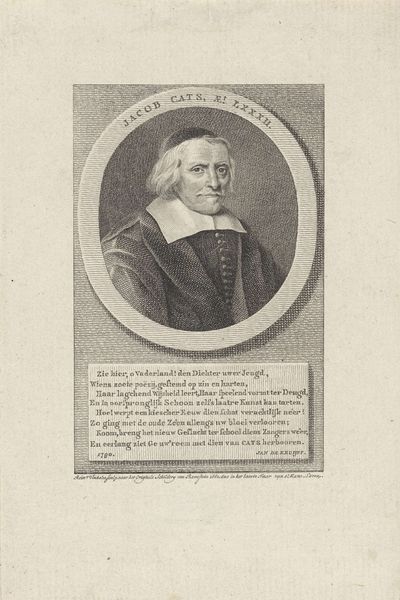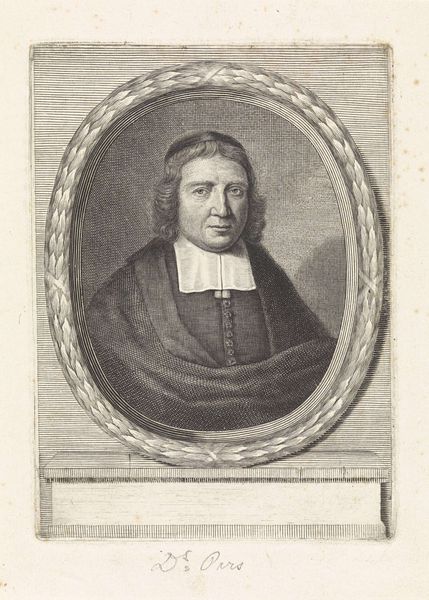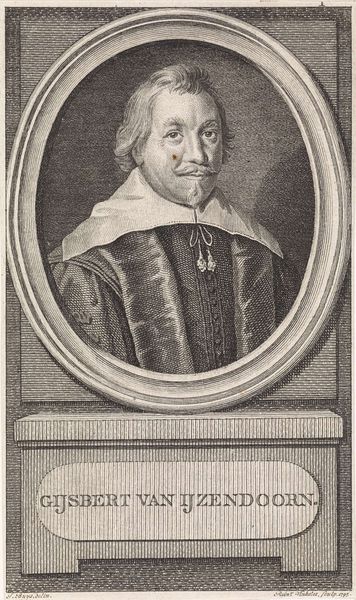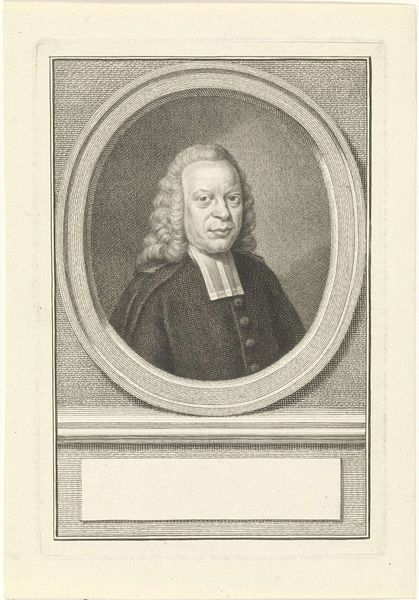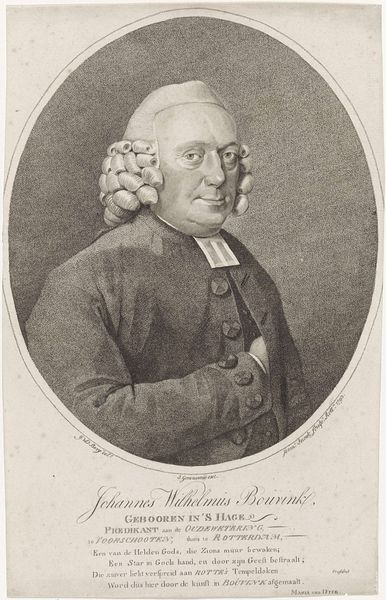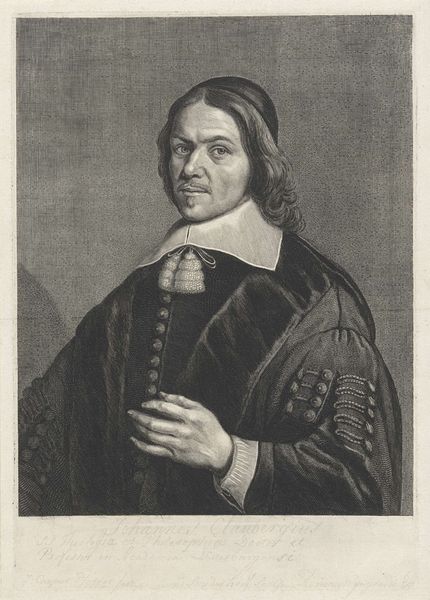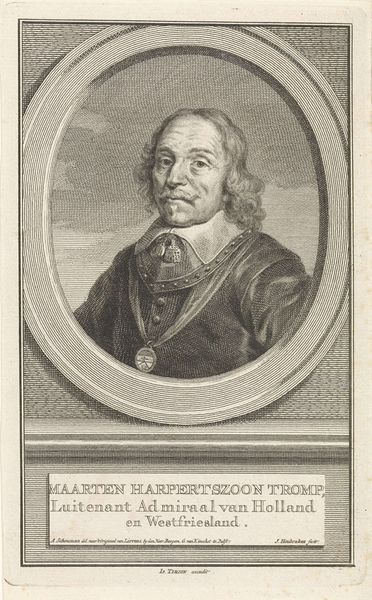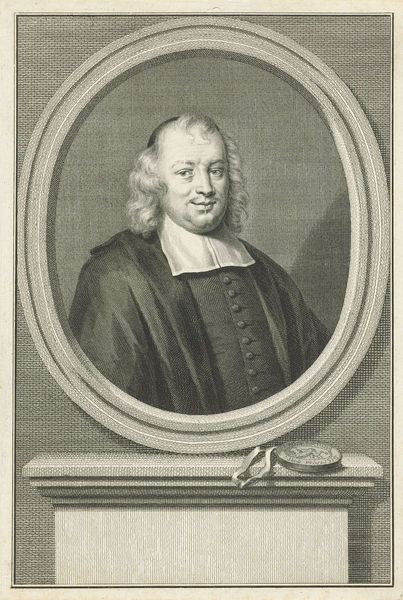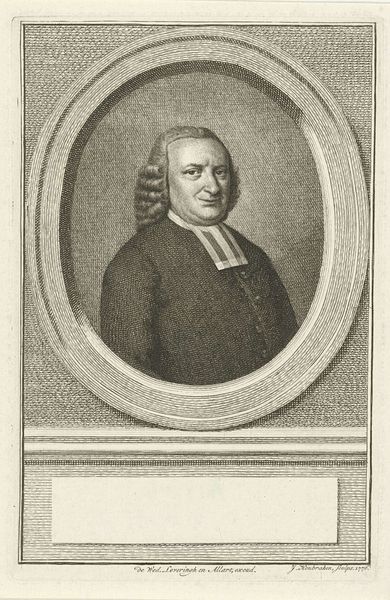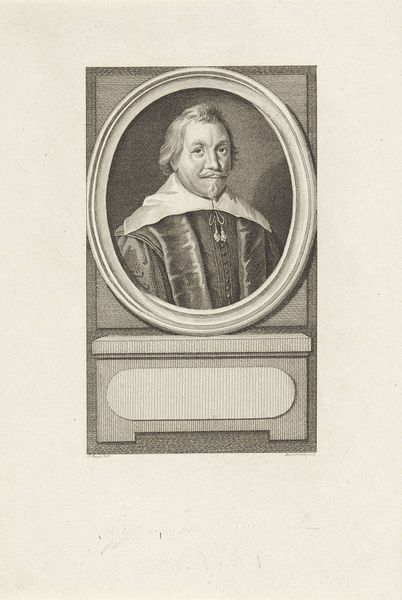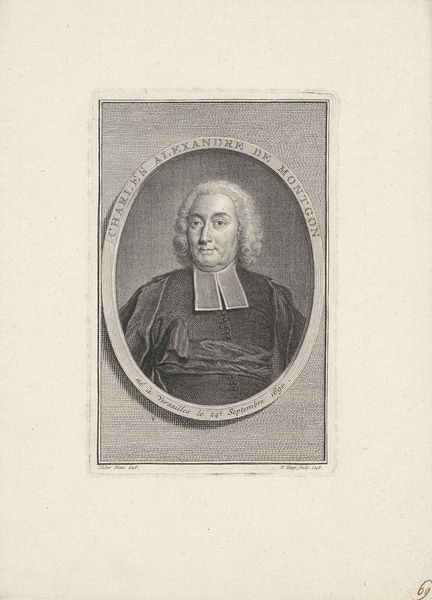
print, engraving
#
portrait
# print
#
academic-art
#
engraving
Dimensions: height 82 mm, width 85 mm
Copyright: Rijks Museum: Open Domain
Editor: This is a print titled "Portret van de dichter Jacob Cats," dating from 1783 to 1851, attributed to Willem van Senus. The medium is engraving. What jumps out to me is the intense detail achieved through the engraving process. What's your perspective? Curator: From a materialist viewpoint, it's compelling to consider the socioeconomic context in which this print was created. Engravings like this allowed for the mass reproduction and distribution of images. Who was this image for, and what kind of access did it create for the public? Editor: That’s a good point. It democratized art by making it more accessible and affordable, right? I also wonder about the role of labor involved in such reproductions. Curator: Exactly! The process wasn't simply about artistic vision, but also about the labor and skill of the engraver and the systems in place to reproduce it. Can you imagine the specialized training, the tools, the very specific actions, the artisan was taught to accomplish to successfully reproduce a detailed engraving such as this? Editor: Now that I think of it, the texture itself, made through this precise labor, creates a sort of visual depth and weight to the image. This transforms the image from simple line work into something palpable. Curator: It is quite fascinating when viewed from that perspective! Even the consumption of the final print must be examined; Was it destined for scholarly study, interior decor, or as memorabilia of sorts? Editor: This definitely sheds new light on how prints function in society and provides a valuable critical perspective! Curator: Yes, understanding the materials and production process transforms a simple portrait into a cultural artifact that can expose broader socioeconomic relationships!
Comments
No comments
Be the first to comment and join the conversation on the ultimate creative platform.
